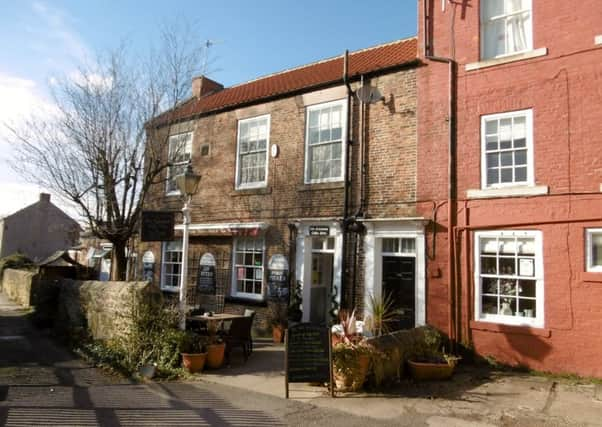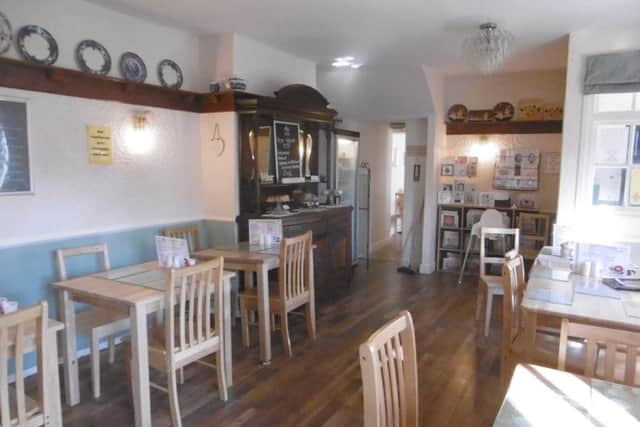History of the Old Bakehouse is not as it seems


Today I had bubble and squeak, with two fried eggs and two rashers of bacon, followed by rhubarb crumble and custard, and all with a pot of tea. It was typical of the menu at the Old Bakehouse — good English food, well served and appetising.
The present proprietor, Derek Gibson, retires this week.


After leaving school, he worked in several different manufacturing jobs. “But,” he told me, “I always liked cooking.”
Advertisement
Hide AdAdvertisement
Hide AdHis first venture in catering was the Cumberland Arms in Walker, also known as ‘Duffy’s’. He stayed only six months before moving to the Newcastle Hotel in Rothbury, first as manager, but later as the proprietor.
He gave it up for his health’s sake, but bought the lease of the Old Bakehouse Coffee Shop and has been there for the past 13 years. A lot of its charm is due to him, most of all, of course, the cooking.
“When I first came here,” he said, “it had tables and benches fastened to the floor.”


What you see now is very different.
Delft racks line the walls and an antique dresser faces you as you come in. He bought it in Alnwick for the hall of his hotel and brought it with him when he came to Morpeth. It gives an immediate sense of style.
Advertisement
Hide AdAdvertisement
Hide AdBakehouse Yard has a special place in the history of Morpeth. The first part of the town to be developed was Oldgate, in or before 1188, possibly including the Market Place. It was then extended along Bridge Street, and then, some time after 1239, along Newgate Street.
Bakehouse Yard was the first burgage on the west side of the new development. Unlike the burgage plots immediately below it, it goes right back to the river.


Over the next 700 years, houses were built in the yards behind the houses on the main streets. Many are now the premises of small businesses. In the worst cases, the yard has been reduced to a gloomy canyon between blank walls.
But not in Bakehouse Yard. It’s only built up on one side, most of the houses face south, and it leads directly into the Millennium Green. In short, it’s as idyllic a place as you could reasonably hope to find.
Advertisement
Hide AdAdvertisement
Hide AdBridget Gubbins, in her book The Curious Yards and Alleyways of Morpeth, gives an enlarged plan of the yard from a map of 1853. She notes that the buildings shown on it “were replaced in the later 19th century by the present terrace”.
This, I think, can only refer to the houses down the yard. It looks to me as if the one now occupied by the Old Bakehouse is the same as in the 1853 plan, and the building itself confirms this.


Externally, the 12-pane sash windows and elegant door cases show it to be an 18th century house. Brick was the coming thing then. If you could afford it, you had brick on the front, but made do with stone rubble on the gable end, where it didn’t show.
The bricks are Cottingwood commons, though we need to remember that similar bricks were made at other places locally, such as Bullers Green. The corner at the far end is elegantly finished in ashlar quoins, with flat margins and rusticated faces.
Advertisement
Hide AdAdvertisement
Hide AdThe restaurant actually occupies parts of three different buildings. The main dining room is the ground floor of the house just described.
The kitchen occupies a former cottage built of the same kind of brick. The flare on the window heads again suggests the 18th century. The middle window is a later insertion.
The small dining room, on the right as you go in, is a recent addition. Derek took the lease of it only four years ago. It's actually part of the back premises of No. 29, Newgate Street, Robson House.
Like some of our other restaurants and cafes in the old part of the town, the Old Bakehouse has an original fireplace, but it’s a difficult thing to interpret.


Advertisement
Hide AdAdvertisement
Hide AdIt has a brick arch and is blackened inside, so it was a real fireplace. But it has been built up at the front. Three brick pillars support a stone slab or lintel, leaving two gaps. Was the space behind them used for anything? And if so, what?
Many years ago, I was one of a party from Morpeth Antiquarian Society, organised by the late Harry Rowland, to see in the cellar underneath.
It has a number of interesting arched recesses and our speculation at the time was that these were the ovens of the bakehouse. This theory has now been soundly scotched.
Bridget Gubbins says: “The structures have been examined by members of the Traditional Architecture Group from Newcastle. They are not ovens, but ‘typical wine storage bins of the sort that rather smart houses of the 18th or 19th centuries had. The cellar probably belonged to the fine 18th century house on the front street.’”
Advertisement
Hide AdAdvertisement
Hide AdThe earliest evidence Bridget could find for a bakehouse was in the 1853 plan. It was some way down the yard, and it isn’t clear if it was a common bakehouse or a commercial bakery. Either way, this seems the most obvious explanation for how Bakehouse Yard got its name.
But, sadly, as far as we know, the Old Bakehouse wasn’t a bakehouse at all. It was just a house.